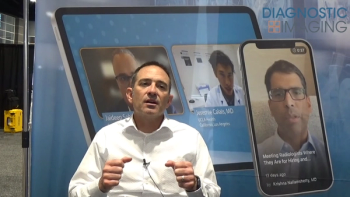
Report from SIR: Cryotherapy proves long-term effectiveness in primary renal cancer
Results from two clinical trials demonstrate that cryoablation of renal cell carcinomas is effective at least a year after treatment in nearly all patients with lesions 4 cm or smaller. The studies suggest that cryotherapy could serve as an alternative to surgery.
Results from two clinical trials demonstrate that cryoablation of renal cell carcinomas is effective at least a year after treatment in nearly all patients with lesions 4 cm or smaller. The studies suggest that cryotherapy could serve as an alternative to surgery.
Interventionalist Dr. Christos Georgiades and colleagues at Johns Hopkins University Hospital assessed 35 patients with localized renal cell carcinoma confirmed by biopsy. All patients underwent CT-guided percutaneous cryoablation and quarterly follow-up for about four years. The investigators found the treatment showed 97% efficacy in tumors 4 cm or smaller and almost 90% efficacy in tumors up to 7 cm at one-year follow-up.
The findings, presented at the 2008 Society of Interventional Radiology meeting, complement other ongoing research.
"We expect that laparoscopic partial nephrectomy and percutaneous cryoablation will be shown to be equivalent in a comparative study that is ongoing now at Johns Hopkins," Georgiades said.
Based on a separate study, he warned about the high likelihood of short- and long-term complications associated with renal cryotherapy. Nearly a fifth of 50 procedures in the analysis resulted in clinically significant morbidities that could be avoided by following proper technique, Georgiades said.
In another study led by Dr. Hussein D. Aoun, a radiologist at Wayne State University Medical Center in Detroit, researchers enrolled 90 patients with 100 kidney lesions, including primary renal cell carcinoma, metastatic malignant disease, and benign kidney tumors. Patients underwent CT fluoroscopy-guided percutaneous cryotherapy with minimal sedation and were followed with CT or MRI for an average of 1.3 years.
Aoun and colleagues found only six of 90 patients showed local tumor recurrence before one year. They also observed rates of 7% and 3% for minor and major complications, respectively, which they graded using National Cancer Institute criteria.
Despite a long history, percutaneous cryotherapy remains largely ignored by the mainstream medical community. It is, however, FDA-approved, widely available at major institutions, and covered by health insurance, Georgiades said.
For more information from the Diagnostic Imaging archives:
Newsletter
Stay at the forefront of radiology with the Diagnostic Imaging newsletter, delivering the latest news, clinical insights, and imaging advancements for today’s radiologists.




























